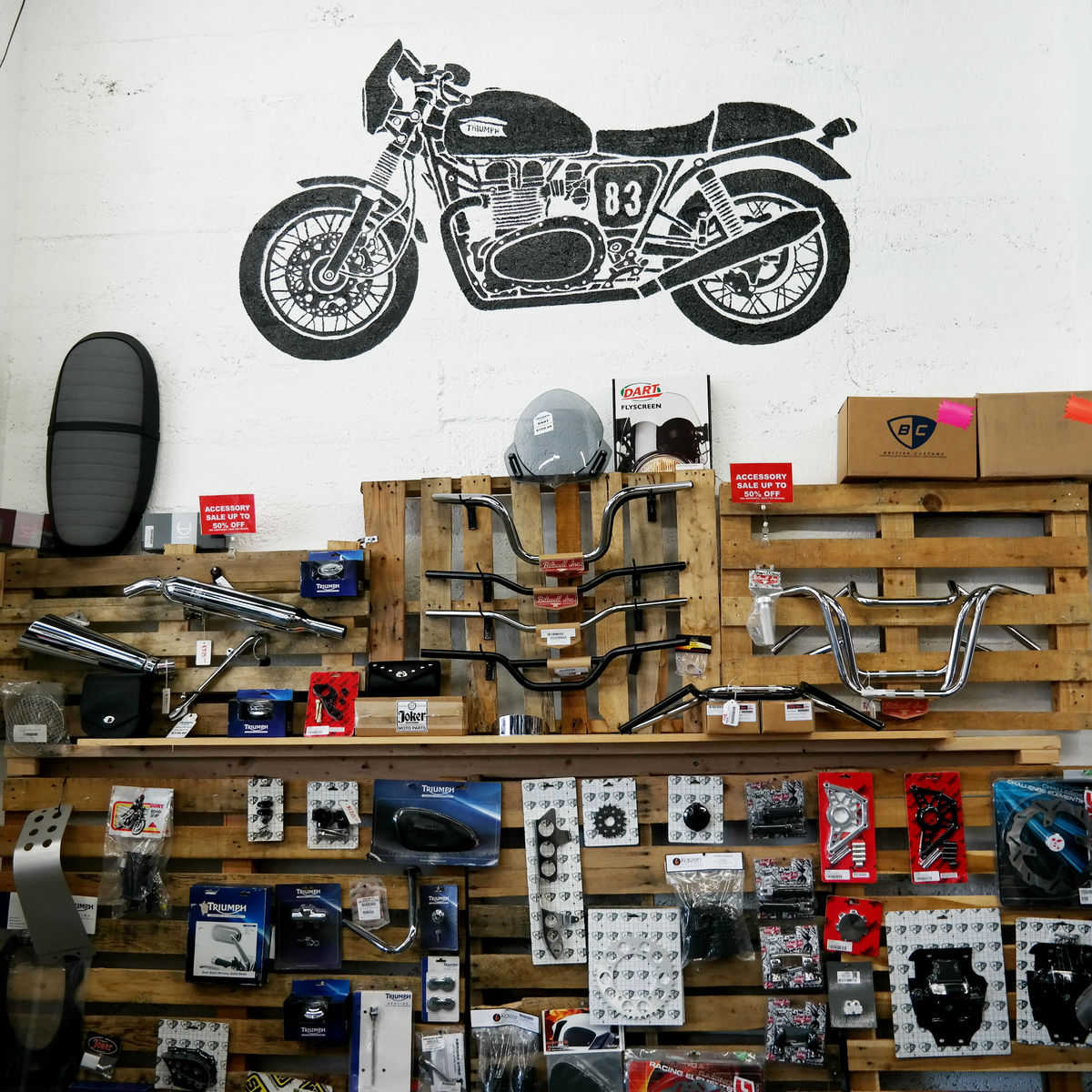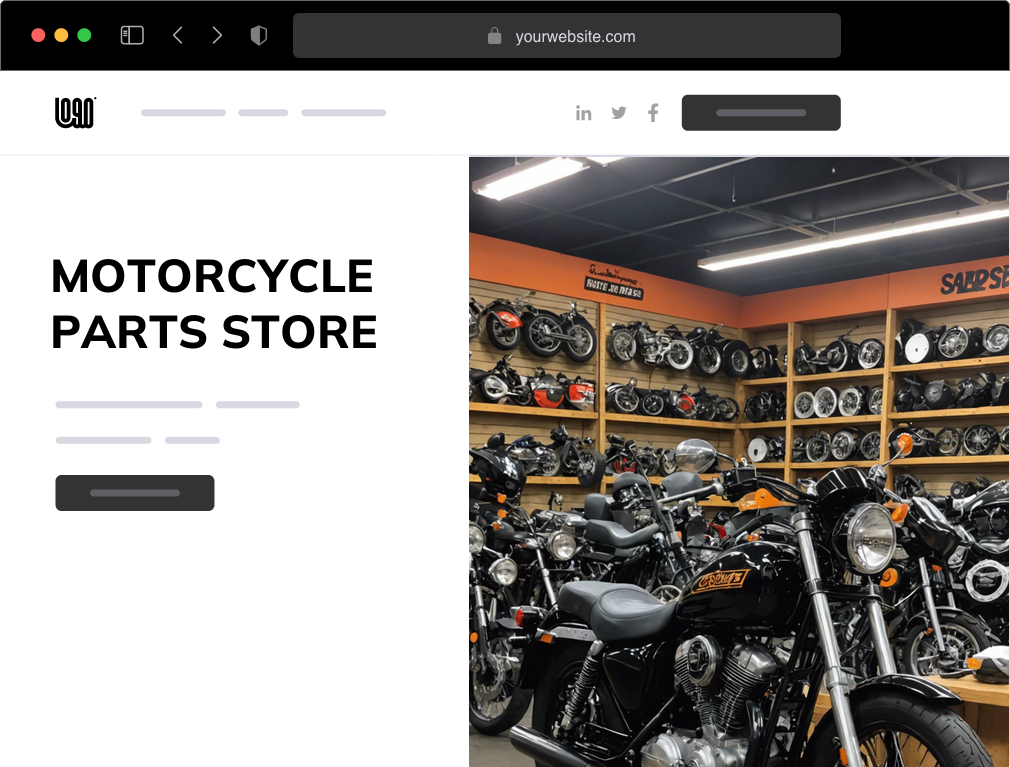Your Best Motorbike Shop for Top Quality Parts and Accessories
Your Best Motorbike Shop for Top Quality Parts and Accessories
Blog Article
Comprehending the Crucial Parts of a Motorcycle: A Comprehensive Guide for Lovers
For motorbike lovers looking to raise their riding experience and guarantee their bikes run smoothly, understanding the important parts of a motorcycle is paramount. Each aspect, from the engine's complex operations to the essential role of the braking mechanisms, not only influences efficiency however also security and comfort. This overview will certainly go through the essential parts that every motorcyclist ought to know with, making it possible for notified selections in both maintenance and prospective upgrades. As we start this expedition, one must ask: exactly how does each element connect to produce the smooth experience every fanatic looks for?
Engine Elements

The camshaft plays a vital function in managing the timing of the engine's valves, ensuring the precise opening and closing needed for efficient fuel and air intake, as well as exhaust expulsion. This timing is crucial to maintaining optimal engine performance and efficiency. Additionally, the carburetor or fuel injection system, depending on the motorcycle version, is accountable for mixing air with gas in the appropriate proportion for burning.
The air conditioning system, either air or liquid-based, works to maintain the engine's temperature within functional restrictions, avoiding getting too hot and guaranteeing longevity - motocross parts nz. Each part, thoroughly designed and integrated, adds to the smooth operation of the engine, specifying the motorcycle's power outcome and overall performance
Transmission System
Integral to the bike's capability, the transmission system ensures efficient power transfer from the engine to the wheels. This system makes up several critical components, including the clutch, gearbox, and last drive, each playing an important duty in equating the engine's power into activity. The clutch, generally run by a hand bar, offers to engage and disengage the engine from the transmission, permitting smooth equipment changes and controlled acceleration.
The gearbox, usually described as the transmission appropriate, has a set of gears that motorcyclists can by hand shift with to change the bike's rate and torque result. These gears are organized in a series that enables the motorcycle to accelerate efficiently and keep ideal engine efficiency across numerous rates. Many motorcycles make use of a consecutive transmission, calling for the rider to shift gears in an established order.
Braking Systems
While recognizing the transmission system is crucial to utilizing a bike's power, similarly crucial is the capacity to control and quit that power successfully, which is where braking systems enter play. Brakes are important for safety and security and performance, offering the cyclist with the necessary control to browse numerous terrains and conditions. Normally, bikes feature two kinds of braking systems: disc brakes and drum brakes.
Disc brakes are extra prevalent in modern motorcycles as a result of their remarkable efficiency. They include a brake disc, caliper, and pads. When turned on, the caliper presses the brake pads versus the rotating disc, transforming kinetic energy into heat, therefore slowing down the wheel. This system uses better warm dissipation, constant efficiency, and improved quiting power, specifically in damp problems.
Alternatively, drum brakes, though less common, are still located in some bikes. They function by pressing brake shoes versus the inner surface of a drum connected to the wheel. While generally less effective in warm dissipation and quiting power, drum brakes are less complex and much more economical.
Comprehending these stopping systems' nuances enables motorcyclists to maintain their motorcycles appropriately and appreciate the design that ensures secure and efficient stopping.
Suspension and Steering
Suspension and steering systems are important components that significantly influence a motorbike's handling and ride convenience. The suspension system, being composed of forks at the front and shock absorbers at the rear, takes in roadway abnormalities, enhancing security and control. Front forks, commonly telescopic or inverted, compress and rebound to alleviate influences, while rear shock absorbers keep tire call with the roadway, vital for traction and safety and security.
Steering, centered around the handlebars, connects the motorcyclist to the motorcycle's directional control. The guiding head bearings guarantee smooth procedure, allowing specific maneuverability. Appropriate placement and upkeep of these bearings are vital for foreseeable steering reaction and minimizing cyclist exhaustion.
The suspension's adjustability is an additional critical element; preload, damping, and rebound setups permit personalization to suit various riding conditions and styles. This adaptability is necessary for maximizing efficiency, whether navigating urban streets or dealing with sturdy trails. Technologies like digital shock absorber offer real-time changes, boosting ride quality throughout varied terrains.

Electric Systems
After making certain a controlled and smooth adventure with efficient suspension and steering systems, interest transforms to the electric systems, an essential facet of visit here modern-day bikes. These systems play an essential duty not only in starting the engine yet additionally in powering numerous elements that improve the capability and security of the motorcycle.
At the heart of a motorcycle's electric system is the battery, which stores electric power essential for beginning the engine and powering complementary systems - motocross parts nz. The generator or generator, coupled with the rectifier-regulator, guarantees the battery remains billed while the bike is in procedure, converting power right into electrical energy and preserving voltage levels
The ignition system, one more vital component, is responsible for igniting the air-fuel mixture in the engine's cyndrical tubes. Modern bikes usually utilize an electronic ignition system, providing better efficiency and integrity compared to typical systems.
Illumination systems, including fronts lights, tail lights, and indicators, are likewise crucial, guaranteeing visibility and safety for the rider. Added digital parts such as sensing units, control systems, and shows add to sophisticated attributes like gas injection management, anti-lock braking systems (ABS), and digital control panels, even more boosting the riding experience.
Verdict
A comprehensive comprehension of a motorbike's necessary parts, including the engine, transmission system, braking devices, suspension, guiding, and electrical systems, is crucial for visit this page fanatics intending to optimize convenience, safety and security, and performance. Proficiency of these elements allows for informed choices pertaining to upkeep and upgrades, ultimately enhancing the riding experience. By incorporating this knowledge, bikers can ensure their motorcycles operate at peak efficiency and integrity, thereby taking full advantage of both satisfaction and longevity of their cars.
For bike fanatics looking to raise their riding experience and ensure their bikes run efficiently, understanding the important look at these guys parts of a motorbike is paramount.Indispensable to the bike's functionality, the transmission system makes sure effective power transfer from the engine to the wheels.While comprehending the transmission system is essential to using a bike's power, just as vital is the ability to regulate and stop that power efficiently, which is where braking systems come right into play. Commonly, bikes include two types of braking systems: disc brakes and drum brakes.
A thorough comprehension of a bike's crucial elements, including the engine, transmission system, braking systems, suspension, guiding, and electric systems, is indispensable for enthusiasts aiming to enhance safety, convenience, and efficiency.
Report this page